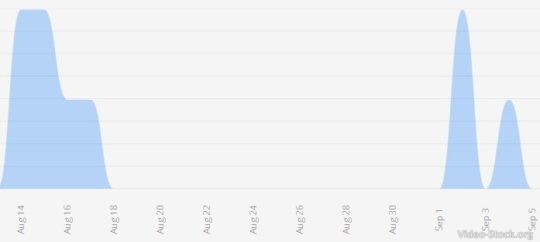Anything in this world can be regulated through rules, lobbying or software. Even stock video agencies are regulating how much sales their contributors get. This might offend some people, but we have been watching and analyzing our sales for about four years now and same patterns show up so many times it already hurts our eyes. With a bigger database, it only gets more clear. You can’t really see this if you don’t have a lot of stock footage or you only shoot only selected niches. Even if you don’t believe it (yet), we won’t force you to. Just ask yourself, how would YOU satisfy thousands of contributors with a small amount of stock footage which have pretty solid quality? Would you push them up and psychologically stimulate them to make more stock media? If more variety of stock footage is made it is good for the agency too. Their income that is.

Stock Footage of Person Offer 500 Euros From Thick Wallet 4K
Our analysis of stock video sales consists only of two bigger agencies where we have the most sales and with that, it is easier to see all the magic happening. We can’t see how they regulate sales through Dissolve, Fotolia/Adobe or iStock/Getty because their number of sales are shit.
Pond5 with days of complete blackout
We can’t argue that Pond5 is the best agency which cares about the contributors the most. But still, it is an unsteady source when it comes to income. Now they even confirmed our thesis that they regulate sales too. There have been many months when the first half of the month was good, the second part was bad. The worst time for us if the second part of the month is bad and the next month first part is also bad. Then months like June 2017 happened. But when extremely long days with no sales happen, it looks like the statistics chart below. If you think, that such statistics are just coincidences you aren’t selling enough to notice such patterns. It is not even funny seeing such patterns with a port of more than 12 thousand files.

Shutterstock with max number of sales per month
We’ve been discussing Shutterstock strange selling strategy a while back. Because we were uploading some images too, they were actually stealing our video sales. Before we started uploading images we actually had better income and a bigger number of sales of video files. After we deleted images from Shutterstock, sales of videos didn’t yet reach sales before we started uploading images. We can’t explain what happened to our account. It looks like we received some kinda punishment for deleting images. But the most worrisome were months of time when images were up. If we look at our number of sales we see each year rising for about ~10 more a month, this year they have fallen on the 2016 level. It looks like every month is a copy of last year. Maybe with 4-8 sales up/down. Tell me, you think this is a coincidence?
In July 2016 there were 61 sales. This year 55.
August 2016 there were 59, this year 54.
April 2016 – 68, this year 57.
Januar 2016 – 54, this year 64. (when images were still online)
Our port with files grew too. It grew with 4200 new files in 2015, and 2100 new files in 2016. The number of files went down because we become more strict on uploading only good and quality files. Adding more variety of themes and fewer files per shooting set.
If you noticed number of sales per month they aren’t a lot growing. It’s an extreme rarity if the number of sales exceeds these averages. May in 2016 was one and only surprising month with 93 sales. And it wouldn’t be any suspicious if we had an average of 1000 sales per month. But with only 50-70 sales and constant ~10 up-sales each year, it is very clear that regulations are working “well”. We still don’t understand why we have been punished for deleting images because the up-sales rate has fallen exactly after deleting files.
Conclusion about regulations
Regulations on Shutterstock and Pond5 might be good for newcomers, but bad for long-term contributors. Because we produce stock video footage for a living, we cannot predict when we will be cut off and go bankrupt. Making investments is a problem, not to mention bigger paid shooting sets.

